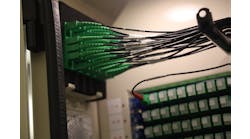Read the next article in our special report series on college microgrids. Learn how microgrids are becoming more affordable — and valuable — for today’s educational institutions. And explore microgrids as revenue producers.
Get the full report.
Microgrids can help campuses reduce peak demand charges, which for some institutions can be onerous, accounting for as much as 30%–70% of total monthly electric charges, according to a report from NREL and the Clean Energy Group.
Peak demand charges affect a wide range of users. Therefore, most users strive to reduce their power demand (as seen by the utility) during these periods so that their demand charges will be set at a lower level. However, this is a difficult task, requiring control of power supply and usage during the peak periods. Solar PV by itself may reduce demand charges, but solar power is intermittent, hence unreliable. Battery storage is a major addition to peak load management. However, a microgrid offers a far more reliable solution.
Demand Response
A microgrid offers the means for campuses to participate in demand response programs—where a utility pays its customers to reduce their energy use during periods of peak electric demand. Those without microgrids or on-site generation participate by shutting off lights, adjusting room temperatures, reducing their operations or even sending employees home. But those with microgrids can accrue the benefits of demand response without cutting back on energy use; instead, they curb use of utility power and rely on their microgrid generation or energy they have stored in its batteries.
Demand response is becoming an important grid management tool, one beneficial to both the participant and society at large. By participating, a college or university helps reduce strain on the grid at crucial periods and averts the need for utilities to install and use peak generators, which are generally less efficient and often rely on fuels that produce higher emissions.
Ancillary Services
Depending on market rules where the microgrid is located, it may be able to sell what are known as ancillary services to the electric grid. For example, grid operators are constantly balancing supply and demand, keeping them within an acceptable range of tolerance. When the equilibrium starts to move beyond an acceptable range, the grid operator may seek a quick injection of power from an outside source, such as a microgrid. The grid operator pays the microgrid owner for this service.
Electric grid operators engage in real-time, moment by moment orchestration to keep supply and demand in balance, and their ability to do so determines power availability and prices. Loss of too much supply can send power prices skyrocketing and even lead to power outages. A microgrid’s ability to respond in milliseconds enables it to supply value-added grid resources in return for financial compensation.
Northeastern University says it is
developing a microgrid that sets the bar
for higher education, using a self-funded
approach to bolster its campus resiliency
while achieving sustainability goals. Photo: Courtesy of Northeastern University
Leverage Grid Pricing
Wholesale power prices can fluctuate dramatically on the electric grid. Every generation resource on the grid and associated with a microgrid offers a different operational and variable cost profile. Because load varies economically based on weather, time of day, day of week, and other factors, it is optimal to access supply using the lowest cost generation and storage resources. Advanced microgrids can be programmed to continuously simulate and optimize supply based on the characteristics and fuel pricing for each distributed generator and the market signal for real-time grid pricing.
Microgrids Becoming More Affordable
As you can see, microgrids are an energy asset that can both save money and earn revenue for a campus, which makes them an appealing energy investment. In addition, they have dropped in price roughly 30% in recent years, according to Navigant Research.
See the full report to learn how campus icrogrids for student recruitment and workforce development
That said, the capabilities offered by advanced microgrids have escalated significantly in recent years, and features and functionality previously reserved for utility scale controllers can now be found in microgrid controllers.
Microgrids also are made affordable by various government incentives, such as the federal investment tax credit for solar or the state renewable energy credit programs. Some states, including California, Connecticut, Maryland, Massachusetts, New Jersey and New York, also have made grants available for microgrids. Hawaii and California are considering microgrid service tariffs to help foster their development.
Traditionally, colleges and universities have expanded their campus utility systems over time to meet growth requirements, using a range of traditional financial approaches including bonds, debt, capital budgets, grants and energy savings performance contracting. The power purchase agreement (PPA) model is dominant for solar PV investments, largely driven by the ability of the private sector to capture lucrative federal tax credits and offer a resulting lower rate for solar power. The PPA model is being expanded to support microgrids or hybrid power systems that might consist of solar PV, battery storage and electric vehicle charging that are operated with a microgrid controller. The same systems might be delivered using an energy-as-a-service (EaaS) model.
For larger, more complex campus generation plants and microgrid systems, DBOOM and DBFOM (design, build, own or finance, operate and maintain) models continue to grow in popularity. The avoidance of upfront capital requirement and transfer of risk to a private sector partner are the main drivers for these models. The landscape of higher education suggests continued acceleration of this energy asset outsourcing trend.
Given that generating resources typically represent the largest cost within a microgrid, using existing resources can significantly reduce a project’s price tag.
And, last, it’s important to note that microgrids are modular in structure, so they can be improved incrementally as budget allows. Not all generating assets need to be added at once; a college or university can gradually expand the microgrid to reach sustainability goals.
Energy cost savings are valuable for any organization, but especially so for higher education at this time, given the many pressing financial needs faced by colleges and universities. Spending less on energy frees up capital for other priorities.
Catch up on the first article in this series on campus microgrids. And learn how microgrids protect campuses from outages, as well as optimize renewable energy.
In the coming weeks this special report series will explore the following topics surrounding university and college microgrids:
-
How Microgrids Boost Decarbonization Efforts
-
Microgrids Acting as Teaching Tools and Community Partners
Download the full report, “The Genius of Microgrids in Higher Education,” courtesy of Siemens, to further explore the potential of university microgrids.







